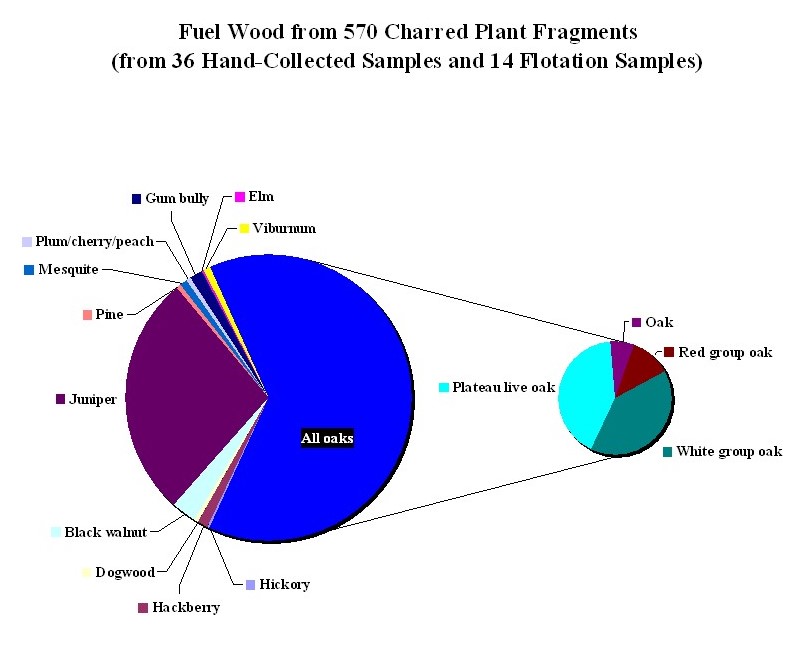
Macrobotanical remains are plant parts that can be observed with the naked eye, without having to use magnification or a microscope. As shown in the graph, the plant remains recovered by hand excavations and by flotation of sediment samples from features are dominated by charcoal fragments representing wood that was burned as fuel in the fireplace or in a wood-burning stove. The charred woods are dominated by oaks and, to a lesser extent, juniper. Both live oak and juniper trees are abundant in the area today, and make excellent firewood. Other fuel woods are black walnut, gum bully, hackberry, mesquite, dogwood, and hickory, all of which are native to Travis County. Pine is the only wood that is not native to the area, and the charred pine wood probably represents some type of wooden box, container, furniture, or structural lumber that was broken up and used as firewood.
A number of large pieces of unburned wood were recovered, mostly from protected areas underneath the rubble pile formed when the rock chimney collapsed. These unburned woods are from white oak group (probably live oak), juniper, and pine. The oak and juniper are native to the area, and these large pieces are probably remnants of the house floor or walls. Pine is not native to this part of central Texas, and it may represent pieces of structural lumber or furniture that was made elsewhere.